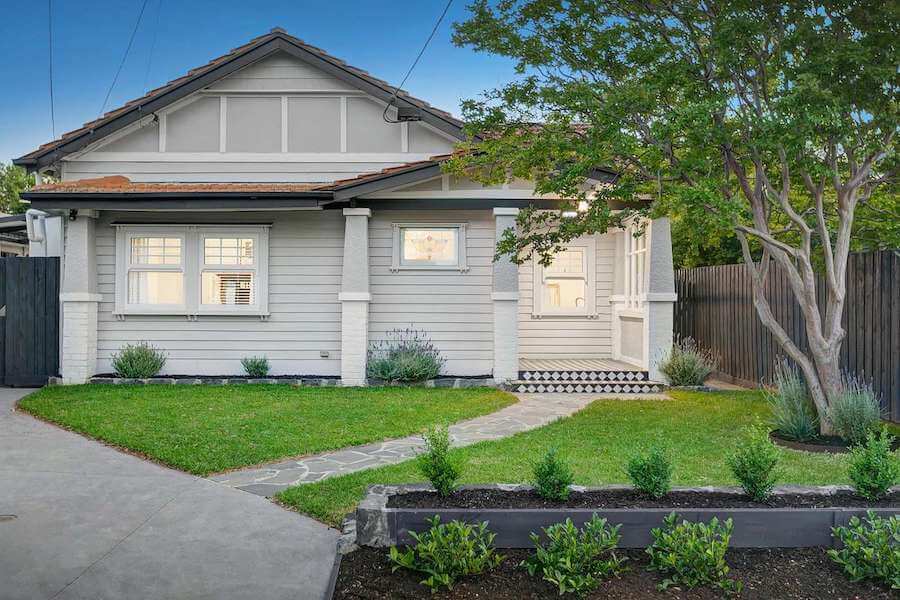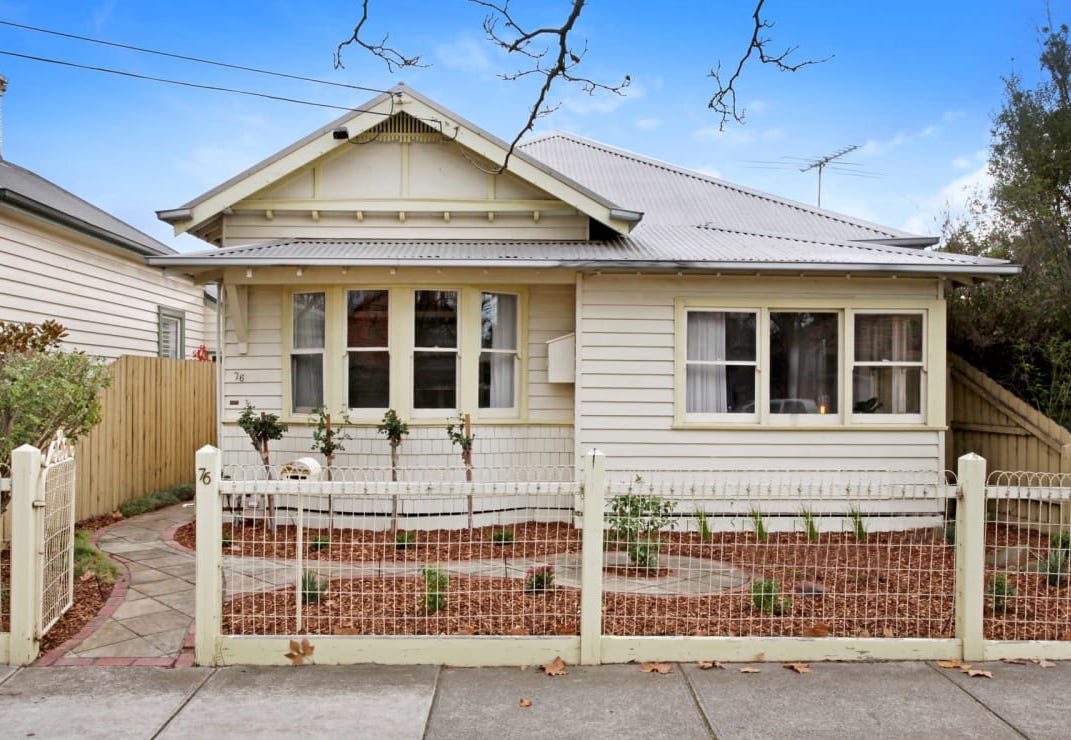Flipping homes successfully is not as simple as it’s made out to be on television shows and home improvement blogs. It’s best to consider many things to turn a profit when the time comes to sell. A lot of people underestimate how challenging it is to flip homes when investing in real estate, which can lead to problems and financial losses.
It’s important to understand that there is a limit to the profit you can make when renovating a home to sell. You need to consider all the costs along the way, which include:
- a house deposit,
- taxes,
- insurance,
- paying tradies,
- and mortgage repayments.
As someone with plenty of property flipping experience, I have developed useful tips over the years. I know what to look for when purchasing a suitable home to flip.

Topics in this article:
My ultimate guide to a successful property flip
1. Avoid purchasing unique properties.
Buying a unique house may be desirable if you plan to live in it and fixing it up will be a labour of love; however, when purchasing a property to flip, this could work against you.
By ‘unique’ we’re referring to properties that are set in a challenging location (think clifftop, an old warehouse, forest, hillside or a sloping block), are quirky (like architectural one-off designs or conversions) or historic and older homes (like a Victorian home or 100-year-old+ structure).
Unique properties often take longer to renovate as they present challenges you don’t commonly find in standard homes. They appeal to a small pool of niche buyers, so you are limiting your resale market considerably.
The ideal property you purchase to flip should conform with what’s in demand in the local market. This will enable you to focus on renovating the property to be up to (or beyond) the required standards.
2. Estimate all renovation costs ahead of purchase.
Before committing to the purchase of any property for flipping, calculate the total cost of your renovation. You will be dealing with various expenses, including; materials, tradespeople, costs relating to planning permission, and removal costs for old materials.
These are the most obvious costs. You will also need to factor in the prices of getting finance for the renovation, and you won’t be able to take on a tenant while working on the property. Therefore, the property won’t be generating any income.
If the estimated cost of the renovation combined with the property purchase price exceeds what you can expect from selling it when you’re done, it’s not worth it. Move on to another property instead.

3. Consider negotiating with motivated sellers.
If you find a vendor who wants to sell their property quickly – perhaps they have already purchased a new property and need a quick sale to come through – there may be room for you to negotiate on the sales price. If you can negotiate the price down, it will put you in a strong position to make a healthy profit when you flip the property.
4. Read extensively about renovations and flipping before committing.
A rushed decision can often end up being a bad one down the track. Don’t rush into buying a property because it looks like a good opportunity to turn a huge profit, especially if you are new to flipping properties.
You need to educate yourself on the renovation process and the right way to flip houses before proceeding. This requires you to read extensively to learn about the types of renovations that generate the most profit. You also need to be aware of the challenges that lie ahead during any house-flipping project. You could consult with a flipping expert or even take a course on house flipping to up your property flipping knowledge.
Property flipping FAQs
What is property and real estate flipping?
It’s an investment strategy that typically involves these three strategic steps:
Step 1. Finding an undervalued property to buy.
Step 2. Renovating that property to maximise its appeal (and selling price).
Step 3. Selling the property and making a worthwhile profit over your total purchase and renovation costs.
Steps two and three in the above property and real estate flipping process are sometimes referred to as a ‘fix and flip’.
What is micro flipping?
There is also something called micro flipping which eliminates step two (renovation). It involves finding an undervalued property to buy and then selling it as soon as possible.
How long does a house flip take?
The average time to flip a house depends on factors such as:
- Whether you’re following a ‘fix and flip’ strategy or ‘micro flipping’. Microflipping is faster.
- Market conditions in the area you’re buying and selling. It’s always best to buy and sell in high-demand locations.
How much money can you make flipping houses?
The profit you can make on flipping a house depends on:
- How undervalued it is when you buy it,
- how much money (if any) you spend renovating it,
- and how much you sell it for.
What is better, flipping houses or renting houses?
Flipping houses is an alternative investment strategy to buying a house and renting it out. When you take a ‘flipping houses’ approach to investment, you’re looking to maximise your capital gain as quickly as possible.
Renting out houses, on the other hand, is more of a long-term strategy. Renting a house will let you generate income from tenants. Your house will also likely increase in value over time. Australian property prices in most areas have recorded strong overall growth over the last 25 years.

How do I start flipping houses?
The house flipping process should begin with detailed research to find an undervalued property. This property should also have renovation potential if you want to follow a ‘fix and flip’ strategy to maximise your profit.
How much money do you need to flip a house?
This depends on factors such as:
- Your financial situation.
- The type of property you want to flip.
- The location of the property you want to flip.
- The extent of the renovations you want to do if you’re following a ‘fix and flip’ strategy.
What is the 70% rule in house flipping?
The 70% rule of thumb in house flipping is that the home purchase price should be a maximum of 70% of what it will be worth after you’ve completed any repairs and renovations. To turn a profit calculate 70% of the ‘after repair value’ minus the repairs/renovation cost to figure out the max price you should offer on the property initially. This way your profit should be around 30% of the sale price of the home.
How do I flip houses with little or no money?
You should be able to use the equity in your own home as a deposit to buy your property to flip. If you need to borrow money, you’ll need to convince a lender of your ability to make home loan repayments.
How do I find cheap properties to flip?
Properties often sell more cheaply when a seller needs or wants to sell urgently for financial or relationship breakdown reasons (this is also known as a ‘distressed’ sale).
How many houses can you flip in a year?
This depends on factors such as your financial situation, whether you want to follow a ‘fix and flip’ or ‘micro flipping’ strategy and how much time you can devote to your investment strategy.
What are the best ways to make money flipping houses?
The best way to make money by flipping houses is to buy undervalued properties. Then you can choose whether it’s worthwhile to ‘fix and flip’ or whether you’d be better off micro flipping.
If you can add value to the home quickly, easily and cost-effectively, ‘fix and flip’ will likely be the best way to make the most profit. If you can’t, micro flipping an undervalued property for a quick profit is likely to be the best strategy.
What are the dangers and risks of property flipping?
Risks to be aware of when you’re property flipping include:
- Not buying a genuinely undervalued property,
- spending too much money renovating it if you’re following a ‘fix and flip’ strategy,
- and not being able to sell the property at the price you want, when you want it.
What do I avoid when flipping houses?
Buying properties that aren’t undervalued and spending too much money on renovations (this is known as overcapitalising).

What taxes are there when flipping houses?
The major tax implication of flipping a house in Australia is the capital gains tax (CGT). It is levied on the sale of any property (excluding residential property) that’s sold for a profit.
How much tax will I pay if I flip a house?
This depends on factors such as how much profit you make and how quickly you flip the property. There is a 50% CGT discount if you hold onto the property for at least 12 months before flipping it.
How do I avoid paying taxes on a house flip?
You can’t avoid paying tax on a house flip unless you sell at a loss. However, you can reduce the amount of CGT you pay by holding onto the asset for at least 12 months.
What home loans are available for fix and flip properties?
Types of property flipping loans in Australia include investment property loans and construction loans for renovations.
Do banks give loans to flip houses?
Yes, many banks will provide loans to flip houses to approved applicants.
How do I get a loan to flip a house?
You can get a loan to flip a house by meeting a lender’s approval criteria.
How do ‘fix and flip’ loans work?
Fix and flip loans typically work like any other investment property loan (or construction loan) if you’re renovating. You will need to be able to afford your loan repayments and any additional terms and conditions specified by the lender.
Types of fix and flip loans
The two main types of ‘fix and flip’ loans are principal and interest loans and interest-only loans. Repayments on interest-only loans are cheaper because you are only repaying interest.
Repayments on a ‘principal and interest’ loan, on the other hand, require you to repay both the amount you borrow plus interest.
What are the best loans for flipping properties?
The best loans for flipping properties depend on your individual needs and goals. However, if you’re looking for the lowest repayments, an interest-only loan is the best option.
As you can see there are many things to research and consider before diving into your first house flip. We hope these tips and FAQs help put you on the right path towards house flipping success.
Disclaimer: This is a general guide only and is not intended as a substitute for financial advice.






Looking for the latest book on flipping houses in Australia? Do you have one or know of the name?
Thanks
Victoria